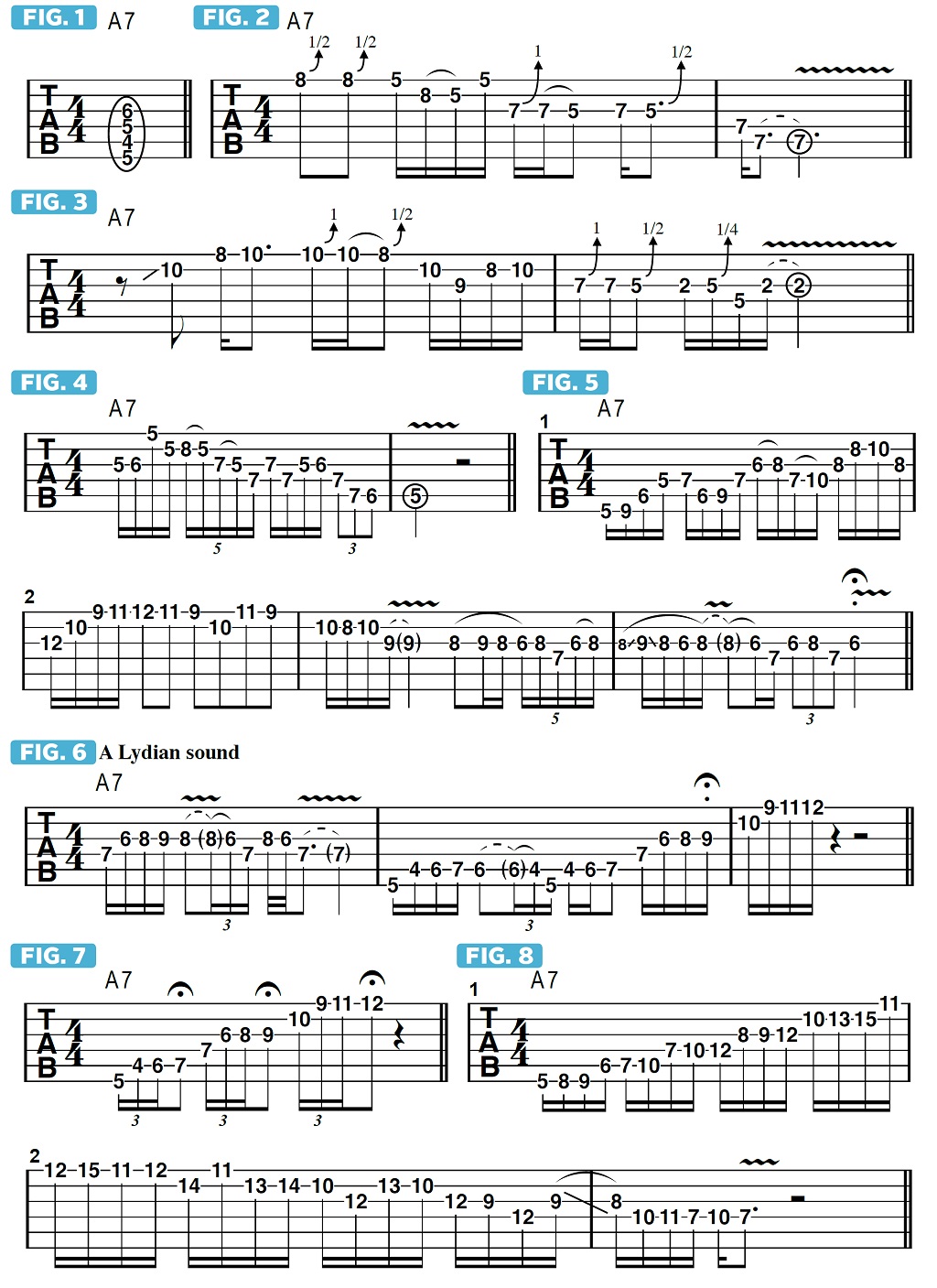Take your improvisation to the next level by listening to your own playing and reacting to it
Dweezil Zappa offers some phenomenal spontaneous soloing strategies
When improvising a guitar solo, my preference is to try to live in the moment, by listening to the musical ideas as they are forming and then reacting to those sounds and following the improvisation wherever it may lead me creatively. Some musicians have the ability to predict what they’re going to play and know what the lines will sound like over any chord, and that is certainly a great skill to have. That said, however, I don’t know too many players that use that as their primary, natural approach.
Some are very organized in the structuring of their lines, while others prefer to just play and wait and see what happens, and that becomes the adventure. Most players I know, myself included, will play something, and that will inspire the next idea. Both approaches are equally valid, and my goal with this lesson is to offer you some spontaneous soloing strategies.
Let’s use a dominant seven chord, specifically A7, as our harmonic environment (see FIGURE 1). A very useful approach for soloing is to begin in a specific position and then look for your next musical ideas in the adjacent lower and higher fretboard positions.
For example, if your starting point, or home base, is 5th position, you’ll want to know what’s available immediately below that, in 3rd position, and above it, in 7th or 8th position, so that you can pivot in either direction. It’s like playing a sport - you should be ready to move in either direction at a moment’s notice.
This type of exercise helps to develop your ear as you investigate a sequence of new musical ideas. The approach is sometimes referred to as call and response, because the initial idea is the call, and then the following idea is the response to what was just played.

Let’s say our home base is A minor pentatonic-type phrases played in 5th position, as shown in FIGURE 2. A natural response is to move, as demonstrated in FIGURE 3, up to 8th position, then back down to 5th and then 2nd position.
FIGURE 4 presents another simple A blues scale-based phrase, and in FIGURE 5 I expand my musical palette by substituting the major third, C#, for the minor third, C, and the sharped fourth, D#, for the natural fourth, D. This lends a modal-type Lydian sound to the phrases, as the Lydian mode includes both the 3 and the #4.
FIGURE 6 offers an elaboration on Lydian-type phrases, and FIGURE 7 illustrates specific melodic cells played across three octaves. A natural expansion on these musical ideas is to move to the phrases shown in FIGURE 8, which are built from A minor pentatonic with the inclusion of the major third, C#, and flatted fifth, Eb.
All of these shapes can and should be re-envisioned on other areas of the fretboard and in different keys, in order to yield even more musical ideas and options. The idea is to be able to move freely around the neck with a clear idea of musical sounds and ideas that are lurking on either side of the position you’re in at any given moment.
Dweezil Zappa is a brilliant guitarist and son of the legendary Frank Zappa. For the past 12 years he has toured the world performing his father’s music with Zappa Plays Zappa and other ensembles. His latest album is Confessions of a Deprived Youth (Deep Fried Youth).
Get The Pick Newsletter
All the latest guitar news, interviews, lessons, reviews, deals and more, direct to your inbox!










